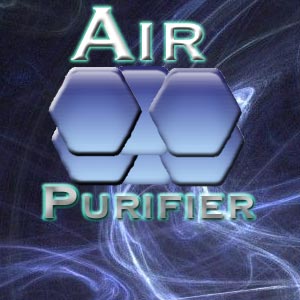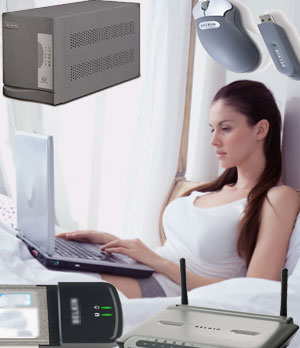Air Purifier

Statistics show that sales of air purifiers have increased by over 80% in recent times. Take a look at some startling data that justify the increased use of air purifiers to maintain an allergen free and healthy home.
- 50% of all illness is due to polluted indoor air, as homes are tightly insulated.
- Environmental Protection Agency (EPA) reports that indoor air is 2-10 times more hazardous than outdoor air.
IAQ (Indoor Air Quality): The data clearly points out that irrespective of the degree of cleanliness maintained, indoor air quality is questionable. The airtight insulated indoor spaces provide little or no natural ventilation for fresh air movement. This is ideal for trapping all kinds of pollutants and irritants in air. Since your naked eye can see only 10% of airborne pollutants, it takes no imagination to comprehend the quality of air we breathe. Moreover, children under twelve, adults over 60, allergy and asthma sufferers, pet owners and smokers are most susceptible to inhaling polluted indoor air. Do not let the airborne contaminants and allergens that circulate throughout your home to settle on the floor, furniture, table surfaces and eventually occupy your lungs. The quality of Indoor air is affected by the suspended particles (particulates), Volatile Organic Compounds (VOCs) such as paint solvents and Formaldehyde, carbon dioxide (CO2) and carbon monoxide (CO). Several studies have implicated the role of VOCs in increased incidents of cancer and allergies. An air purifier in your house maintenance system ensures that you and your family inhale safe and 'sanitized' air.
Use of air purifiers
The air purifier market is flooded with an array of air purifiers. This article can guide you to select the right air purifier - the best for your family. Read through to understand all about air purifiers - sources of indoor air pollutants, the technology involved, features of good air purifier, tips to choose the one that suits you and the price range.
Sources of indoor air pollutants
Home air purifier captures particles present in the air, filters and removes air borne contaminants to provide clean, fresh air that is safe to be inhaled. Sources of indoor air pollutants include :
Biological pollutants: Animal dander, cockroaches, dust mites, mildew, molds, plants, bacteria, and viruses.
Combustion contaminants: Carbon monoxide, carbon dioxide, nitrogen dioxide, sulfur dioxide, environmental tobacco smoke or second hand smoke.
Volatile Organic compounds: Formaldehyde, fragrance products, pesticides, solvents and cleaning agents.
Heavy metals: Airborne lead and mercury vapor
Shopping for air purifier
Before you proceed to buy an air purifier, consider the size of the room (area of effect), density of traffic, budget and its purpose.
Types of air purifier systems
Air purifiers work by mechanical filtration, electrical attraction or a combination (hybrid) of the two techniques as well those that use ionic technology. Each system has different features and specialties to effectively eliminate pollutants present in air.
Mechanical filtration - These air purifiers use a fan to attract the dust particles. A series of filters catch the dust particles that have been attracted. The filters could be HEPA filter, ULPA filter or carbon air filter.
HEPA filter - A HEPA (High Efficiency Particulate Air) filter can filter even the smallest dust particles. This is recommended for people with allergies as it has the capacity to eradicate odor and trap particles as tiny as 0.3 microns with efficiency rating of 99.97%. In comparison, a human hair is 150 microns thick. Air purifiers with HEPA filter can remove allergens such as dust, dust mites, pollens and mold spores. You can judge the effectiveness of HEPA air purifiers based on the amount of airflow and the size of the HEPA filter inside the unit.
- Removes the smallest dust particles including bacteria in the air.
- Captured contaminants are not released back into the air.
- Popular and work well in homes.
- Trapped airborne particles can breed or reproduce in the filter, causing increased microorganism populations.
- Difficult to remove particles that are found at a distance inside filter.
- Chemical fumes; gases, cigarette smoke and other odors are not eliminated.
- HEPA filters need to be replaced once every 12 - 18 months.
- Cost of replacement is high.
- Energy consumption is high as the filters are very dense.
ULPA Filter - Ultra Low Penetrating air filter is capable of locking in 99.99% of particles 0.1 micron and larger. It uses ultraviolet light in the right intensity to destroy the DNA of microorganisms such as bacteria and viruses.
- Micro-fiber web can lock in 99.99% of particles 0.1 micron and larger.
- Causes increase in microorganism populations like HEPA filter.
- Difficult to remove particles deep inside the filter
- Chemical fumes, gases, cigarette smoke and other odors cannot be eliminated.
Carbon air filter - These filters contain highly absorbent pores that cohere to liquids and odorous gases. Therefore they are successful in capturing cigarette smoke, odors and chemical fumes.
- Highly absorbent, effective filter for liquids and gases of an odorous nature.
- Absorbed contaminants are not released back into the air
- Does not remove dust, microorganisms and other allergens.
Electrical attraction - Air purifiers that use electrical attraction do not rely on filters to clean air, but electrify pollutants to collect them in various ways. This can be classified into 2 categories, namely - electrostatic air purifier and electret air purifier.
Electrostatic Air Purifier - Dust particles drawn into a chamber by a fan are ionized (charged) with positive electricity and then are attracted into negatively charged aluminum collectors as the air leaves the cell. Electrostatic air purifiers remove about 95 percent of bulk dirt and 85% percent of microscopic particles in air. Many air conditioners and consumer durable like Televisions and monitors produce copious amounts of positive ions which may have a debilitating effects on susceptible individuals. Negative ions, experienced near a waterfall, on the other hand induce a sense of exhilaration and thought to alleviate asthma in some cases. Dust particles and smoke particulates are often charged with positive ions which can be filtered by the negative ion generators.
Electret air purifier - A special electret filter is charged with static electricity; the charge attracts particles entering the purifier, and the particles cling to the filter. A negative-ionizing purifier charges the air inside it with negative electricity, creating ionized molecules that cling to the particles. The purifier's fan blows the particles into the room, where they are attracted onto walls and other surfaces. These air purifiers do not take the dust out of the room, so you need to that.
- Both portable version and whole-house models are available.
- A good choice for allergy sufferers
- Very low maintenance costs
- No filters to change and air purifier remains clean.
- Not recommended for people with asthma and multiple chemical sensitivity or odor issues
Photo Catalytic Oxidizer (PCO) Air Filters: This type of air purifiers use many stages of air filtration. A fan sucks in polluted air and sends the air to a series of filters - coarse, HEPA and a PCO. A Photo Catalytic Oxidizer uses titanium apatite as the catalytic and a source of UVB (ultra violet B) rays to convert the water molecules from the ambient moisture to hydroxyl radical ions (OH-) which eventually tear apart the pollutants and render them inert.
Hybrid Air purifier - This is a combination of mechanical filters and electric attraction. It has a type of filter media and two air spaces in a metal box, attached to central heating or a cooling duct. Air flowing through the upper air space is filtered through filter sheets in the lower space.
- Efficiently handles a lot of airflow.
- Eliminates many particles from indoor air.
- Filters require replacement.
Ionic air purifier - Metal blades inside ionic air purifier trap the particles in air. These blades with electric charge move the air through the unit by causing a flow of air. The negative and positive ions attract and make the particles and fumes in the air stick to the blades.
- Capacity to absorb about 30% of particles in air.
- Not effective in an enclosed room
- Around 5% of contaminated residue float in air
- Rated poor by Consumer reports
- Tests proved - absolutely no reduction in air pollutants.
Air purifier buying tips
Using quality air purifiers generally bring about immediate difference in the lives of people. The most common yet beneficial advantages include quality-sleeping time, improved energy levels, better breathing and overall good health.
- Air purifiers with washable filters are effective to absorb large particles in air but not good at absorbing microscopic pollutants.
- HEPA filter air purifiers are effective to absorb microscopic pollutants in air and are recommended by doctors for asthma and allergy sufferers.
- The different models that is available to suit your room (space occupancy).
- Portable air purifiers can be used in the bedroom during the night and living area during the daytime.
- A model that cleans more square footage. For each 250 square feet of cleanable area, you require about 100 CFM (Cubic feet per minute). Room models are capable of handling up to about 400 CFM and tabletop models can handle about 175 CFM.
- The amount of noise as well as the speed of air purifier.
- Air purifiers that involve minimum maintenance and availability of parts that require replacement.
Indoor air purifier price range
Prices for indoor air purifier models run from about $180 to $1,000, depending on the mechanics and filtration; tabletop units cost from $60 to $180. Whole-house units work silently, efficiently and clean a great deal of air - about 1000 CFM (cubic feet per minute). On the other hand, whole-house air purifiers are relatively expensive and require installation by a contractor.
Improve indoor air quality
You should have no qualms in accepting that your family deserves the best indoor air quality. A most effective way is by way of removing and minimizing the possible indoor irritants. Using an air purifier can do this for your home. Go in for home air purifier that can address your particular issues. You could also decide to choose the one that can practically absorb everything. Many a time, choosing air purifier that involves a combination of technology can meet your requirement.
Top of the Page: Air Purifier
Tags:#Air purifiers #HEPA filter #ULPA Filter #improve indoor air quality
 Shopping Guide
Shopping Guide Frugal Shopping Tips
Shopping Bags
Rolling Bags for Shopping
Gym Bag
Women Accessories
Texting Gloves
Women's Wallet
Belt Buckles
Clutch Bags
Women Personal Care
 Clothing Shopping
Clothing Shopping Sleeping Eye Mask
Laptop Backpack
Women's Briefcase
Women's Jacket
Women's Shoes
Summer Footwear Trends
Wide Width Shoes for Women
Women's Flat Shoes
Slippers for Women
Sarong
Summer Shoes
High Heels
Bridal Shoes
Designer Handbag
Outdoor Clothing
Shibori Design Techniques
Batik Fabric
Tie Dye Fabric
Plus Size Swim Wear
Facial Steamers
Stress Relief Products
Gadgets for Women
RFID Technology - RFID Application
Residential Thin Film Solar Panels
Renewable Energy Gadgets
Pepper Spray
Lift Chair
Laptop accessory
Device GPS Tracking
Plasma Television
Polarized Sun Glasses
Home Blood Pressure Monitor
Air Purifier
Car Shopping
Pet Carrier
Brochure Holder
Lanyard
Baby Stroller
Step Pedometer
Jewelry
 Jewelry and Ornaments
Jewelry and Ornaments Coral Jewelry
Replica Watch
Expensive Engagement Rings
Vintage Jewelry
Gifts and Occasions
 Valentine Day Gift Shopping
Valentine Day Gift Shopping Mother Day Gift
Handmade Baby Gift
Gifts under $50
Unusual Gift Ideas for Women
Baby Shower Gift
Unique Housewarming Gifts
Unique Wedding Favor
Winter Wedding Ideas
Holiday Shopping
Holiday Shopping Tips
Christmas Shopping Online Trip
Christmas Decoration Idea
Christmas Gift Gadget
Corporate Christmas Gift Idea
Stocking Stuffers
Christmas Candy Recipe
Currency Conversion
Top of the Page: Air Purifier
Popularity Index: 101,210

